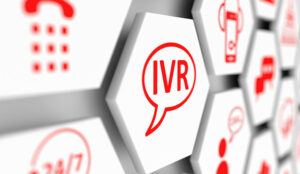A lot of things in contact centres have outlived their ‘sell-by dates’ .
Richard Snow takes us through his wish list of things that he would like to see banished from the call centre.
1. Dumb processes
I very deliberately use the term “dumb” as opposed to “bad”, although much of what I am about to say applies to bad processes as well, and when I look at the next five items, they could also come under the dumb category.
The message I want to get across is that if you just sit back and observe how your centre works, I am sure, like me, you will be struck by the thought “why do we do that?”
For example, in one centre I visited, for very noble reasons, agents were instructed not to put callers on hold without getting a supervisor’s permission. More often than not the only way agents could get a supervisor’s permission was to put the caller on hold while they went and found a supervisor!!
The easiest way to discover these dumb processes is to ask agents and then take action to eliminate everything that is dumb (or bad); I am sure you will be inundated with suggestions, but be sure to take action otherwise agents won’t participate.
2. Overly complex IVR menus
It is widely reported that callers hate IVR. I don’t believe this per se; what I think callers hate is badly set-up IVR menus.
The whole point of IVR was to make it simple to collect some basic caller data and use that to route the call to the most suitable agent to deal with that customer and their issue.
However, many companies seem to have forgotten the “simple” aspect and created menus that are so complex that many callers do whatever they can to avoid them, or just hit random responses because they know in the end it won’t make any difference to what agent they get through to.
In the US this has got so bad that one kind gentleman has created a website that lets callers to the most popular centres know what response to hit that will take them straight to an agent.
In the very worst examples, callers can get stuck at the bottom of a multi-tiered set of menus and can’t find their way out. IVR menus should be kept short and sweet and make a noticeable difference to what the agent says when the caller is put through. Which brings me onto my next popular hate.
3. Repetition
Callers hate having to repeat themselves. If you have just spent 2-3 minutes in an IVR, why is it necessary to give the same information to the agent once you get put through?
Modern CTI software makes it possible to pop any data collected in the IVR onto the agent’s screen, or even go one step further and pop an appropriate screen with the data already populated into that screen. In both cases, the worst case should then be that the agent simply confirms the data you have entered. Although not strictly a case of repetition, why is it that agents typically need more information to validate the caller’s identity than when you go onto the company’s website?
Another classic case of repetition that should be banished is when transferring calls to a second agent or supervisor. Once more, modern systems allow all the data collected by the first person to be automatically passed to the second person. Why make callers start again?
The situation is so bad when I call my mobile service provider that as I get through I automatically give the four pieces of information I know the agent will ask for, and if I get transferred I know I will have to repeat the same four pieces of information.
4. Inappropriate target metrics
Agents are just like anyone else, set them targets and most will find a way to meet those targets, by fair means or foul.
For example, I visited a centre where agents seemed to be getting through very high volumes of calls, so I asked a few agents how were they were managing this. The answer was simple; they were targeted (and rewarded) for keeping average call handling times below 2 minutes, so very simply at 1 minute and 59 seconds they dropped the customer’s call!!
The moral of this tale is that you should think very carefully about what targets you set and the potential impact on agent behaviour.
I would advocate that you have a balanced set of efficiency-related and outcome-related metrics. This should ensure that agents aren’t totally driven by efficiency but are also concerned (rewarded) for the outcome of calls. For example, average handling times will never go away but they should be balanced by something such as first contact resolution rates so agents don’t drop or transfer calls until they have done their best to resolve the customer’s issue.
5. Complex agent desktop
The biggest source of inefficiency I see in centres, which is also confirmed by my research, is the agent desktop.
I still see agents having to use multiple desktops to access different systems and others that have to tab between a whole range of systems just to complete what are seemingly simple transactions; in fact my research shows that agents on average have to use eight systems to handle interactions. This pushes up training costs, increases average handling times, is prone to data entry errors, and is a source of both agent and customer dissatisfaction.
Today there really is no excuse for companies to let this situation continue as there are all manner of solutions on the market that support an integrated or smart agent desktop.
These range from solutions that hide the applications behind a single user interface, systems that use rules-based engines to pop data onto the agent desktop, search-based solutions that can present agents with information from any system, and cloud-based solutions which bring all the customer information together onto one page. Integration and development tools have taken much of the pain out of implementing these systems and the ROI models are extremely convincing.
6. One solution fits all
In today’s markets I think the one thing that customers are crying out for more than anything else is to be treated as an individual, in much the same way as Aviva are promising in their latest TV campaign.
To do this, companies need to know their customers better and personalise each experience based on that knowledge. For this, companies need that elusive complete, or 360 degree, view of their customers that includes every aspect of their relationship with individuals , from marketing, sales, service, IVR transcripts, calls, emails, website visits, IM sessions, surveys and even social media comments.
The very nature of the data sources required to gain all this information has until recently made this task almost impossible. However, new products now make it easier to get the required picture and indeed through applications like a smart desktop, make the information available to agents so they can personalise their response to each interaction.
And that’s just the start!
There are many more things I would like to see banished from centres but I am certain that any company that can truly say they have banished all of the above will be running not just a more efficient centre but a much more effective centre.
[What would you have on your wish list of things to expel from the contact centre? Join the debate in an email to Call Centre Helper.]

Richard Snow
Richard J Snow is VP and Research Director at Ventana Research (www.ventanaresearch.com)
Author: Jo Robinson
Published On: 23rd Oct 2009 - Last modified: 27th Oct 2020
Read more about - Hints and Tips, IVR Solutions, Measurement, Monitoring
















Richard,
I couldn’t agree with you more, especially about issue number 3 and credit card companies seem to be the worst for this.
I am glad to say we advise our clients to steer clear of of these, as you say one size does not fit all.
James
I want to particularly comment on complex IVR menus and Repetition.
It is very annoying to go through a complex, endless IVR menu. I contact the centre because I want to speak to a consultant. I want the human touch. I want to talk to a person not a machine. After all what is the point if I have to repeat myself when eventually directed to a consultant.
I recently contacted a financial institution where I was redirected to at least 10 people and had to repeat myself over and over again. Let alone the inefficient, unprofessional and unknowledgeable people I had to deal with as none of them new who was the right person to help me. I was sent from pillar to post. How disgusting!!
Energy drinks!
I don’t mean to sound facetious or take away from the above list – all valid points and ones which I’ve worked on in my contact centre – but I have a very young demographic in my centre and they all seem to think that drinking 10 cans of Red Bull / Monster / Relentless etc. a day will have no ill effects.
I’ve banned the drinks completely from the building following one of my main culprits collapsing from kidney issues and being carted off in an ambulance and several disciplinary problems compounded by agents being unable to concentrate due to caffeine jitters.
Does anyone else have this problem or is it area / environment / culture specific?
I certainly know within our contact centre, nights out lead to the need for energy drinks to get you through working with the british public all day with a hangover! I certainly agree that efficiency is key, as when someone gets through to us, we cant help them, we can only pass there message on to the relevant company, which means any hideous IVR’s/ hold music etc that make them wait for ten days before reaching us will just create an irate customer on a plate, who we then have to tell we can’t help.
pls provide me the guide lines for a outbound call center